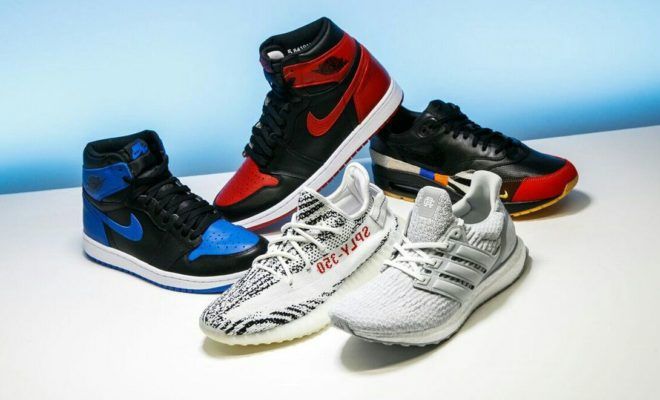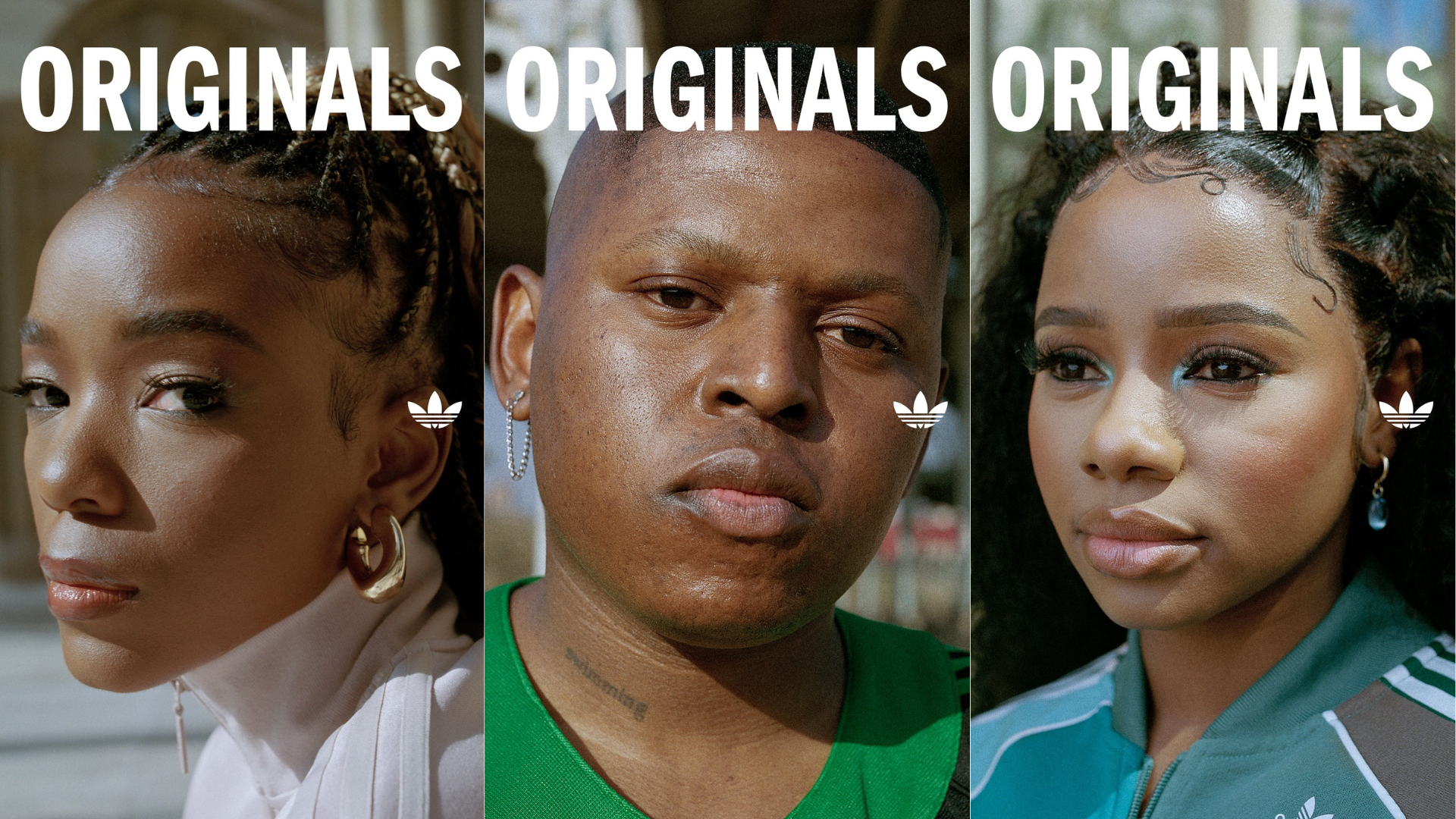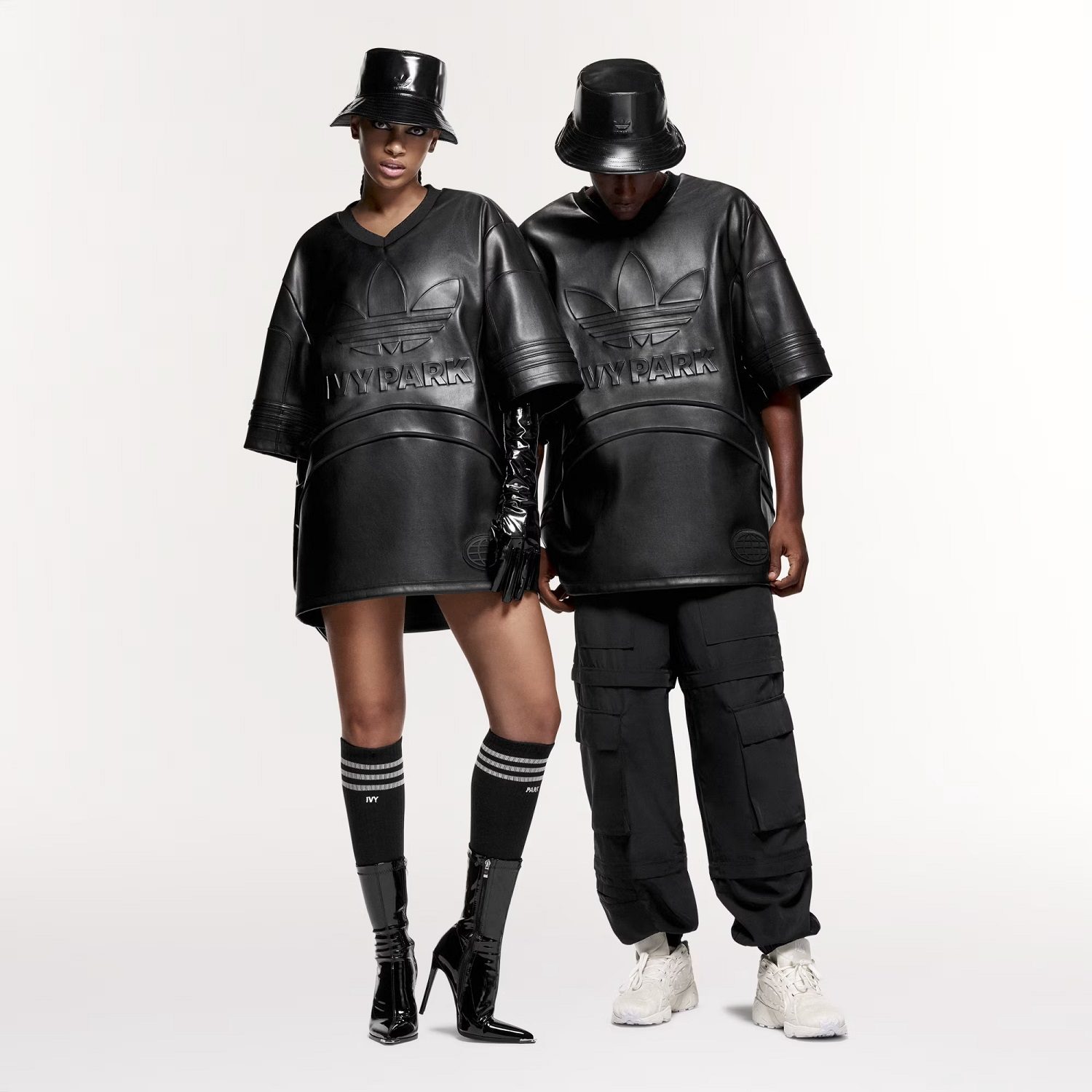Words by Neo Mtshali
Picture snaking lines oozing from the mouths of any of the esteemed streetwear retailers for days on end. Hundreds, sometimes thousands, of fiends all waiting for their chance to step foot in their temple and hopefully get their hands on this week’s treasure of a highly-anticipated sneaker drop [yes, insert picture of Smeagol here]. Some of these sneakers go on display in impressive sneaker closets worth upwards of a hundred thousand dollars (this being a modest size in the collectors’ world), some only see the light of day on a special occasion the owner deems appropriate and the rest… well, they get resold at a profit to the next man – the birth of the sneaker reselling market.
 Stadium Goods Store. Image courtesy of Sneaker News
Stadium Goods Store. Image courtesy of Sneaker News
Reselling sneakers is as old a practice as sneaker culture itself, sprouting as a means to make up some change from the already-worn pair from last year. Fast forward a few decades and this small exercise has grown into a billion-dollar cash industry. People have been raking in six figures in untaxed US Dollars just from flipping rare sneakers that are highly sought after within the boisterous sneaker community and – as with any industry – that is the key. Simply work on the demand of the market and sell just as it reaches its limits. Sneakers like Jordans, Yeezys and Ultra Boosts (the 1.0’s are the true gems in the family) are supplied in limited numbers that are far from the demand of the market. Therefore, resellers capitalise on the basic economic principle of Demand vs. Supply – pushing up the price to the market’s true threshold and then selling.
This is not to say that the primary sellers (Nike and Adidas) lose out on tons of cash. These brands use the secondary market to their advantage in that it offers additional marketing by displaying how sought-after their products are and, in turn, adding to the exclusivity that boosts the value of the brand and its releases. This is all a beneficial cycle that fashion giant, Supreme, has employed throughout its existence and it explains why these brands have not simply increased the supply of their products into the market.
The constant buying and selling of iconic and rare clothes (known as ‘grails’) online led to the start of online thrift store, “Grailed”. On here you can buy and sell high end streetwear pieces like Raf Simons, Yohji Yamamoto, Acronym, Off White and so on. This was somewhat the beginning of the resale world coming alive in such a public way. For the first time, even the most green purveyors of streetwear could log in and start dealing. No secret forums or hidden pieces reserved for the known elite, it’s all right there for any and every one – it’s the internet’s garage sale.


 Images from Josh Luber TED Talk
Images from Josh Luber TED Talk
As a result of this commercialised selling place, along with sites like Hypebeast and Complex, reselling took to new heights in that it became a viable business opportunity with the ever-increasing profit margin on these valuables. Josh Luber, a former IBM tech, seized onto this by creating StockX in 2016. StockX foresees sneaker trading to be as legitimate as trading gold and other commodities. So much so that it treats it exactly in that way and commodifies sneakers beyond street rep and into monetary value. It is an intricate platform that allows you to buy/sell (a stock market for sneakers), create your own portfolio with your deadstock and also track the value of your portfolio by using a system that aggregates the price of a shoe by noting the “highest/lowest ask” made. This is a nervous transformation in, not only, reselling but in e-commerce and the streetwear word.
With transformation being the backbone of streetwear, this shake-up has opened up a new channel for individuals to make buckets of untaxed revenue through pure street smarts, hustle and the right connections – a point that cannot be stressed enough. This is why this trade has been compared to the drug industry. However, unlike selling drugs on the corner, this is perfectly legal! In recent times, resellers have managed to revolutionize the sneaker resale market by cutting out the retailer. Resellers, with the help of very essential connections somewhere along the supply chain, manage to get hold of a number of pairs for below the initial retail price and sell them for about 33% mark-up of what they would be on the shelves. This percentage sometimes shoots up to about 70% on the right shoe.
Numbers like these and the successes of individuals like self-proclaimed “Sneaker Don”, Benjamin Kapelushnik, who has managed to amass an inventory worth $1 million before his high school graduation, have led to a constant barrage of criticism stating that the reselling market is killing the sneaker industry. These cries of foul play are, in part, thanks to the inflated prices that come no less than a few hours after the release of a shoe – Yeezys went from $220 at retail to about $750 for resale! Purists see this is a mode of excluding the real fans and enthusiasts from their own game as well as detracting other people from ever genuinely being a part of it all. Where now it’s moved from “who has the reputation, skill and fight to get the rare sneakers?” to “who has a lot of money?”
There are several ways for a reseller to go about doing business, the most common being to sell through eBay or a personal site which is often the go-to for elite sellers who have made it. This allows for direct interaction with your customers and a chance to negotiate your price but with the downside of facing scammers, skepticism, lack of customers and total costs and time. Another route is the use of consignment shops such as Stadium Goods, Flight Club and many other smaller boutiques. Consignment shops are established stores that acquire shoes from resellers and then sell them to the public – becoming resellers themselves. This method has seen a sharp rise in recent years due to the efficiency it offers both sellers and buyers. The buyer has a central store where they browse through an assortment of sneakers and have a guarantee on the product’s authenticity. The sellers have the leisure of cutting out the administration and overhead costs of finding willing buyers, eBay fees and shipping costs among other things.
 Benjamin Kapelushnik. Images courtesy of Complex
Benjamin Kapelushnik. Images courtesy of Complex
I would be remiss to leave out the uglier side of reselling. The dynamics are constantly changing due to the mainstream attention (thank you to all the Hypebeasts around the world) that this once-underground market is receiving. The increased competition means that there are now more and more players entering the arena which leads to its own plethora of problems, such as fakes, undercutting prices and decreasing the availability of prime stock. Another change is the battle between Nike and Adidas. This corporate battle has led to Nike invariably decreasing the value of some of their premium releases by increasing the supply of once-revered silhouettes, like Jordan’s and Air Max’s, to counter Adidas’ newfound cultural relevance with the YZY, NMD and Human Race models. This rise also means that resellers are changing their focus to Adidas sneakers as this is where the money is.
This market has definitely taken hits throughout the years but continues to find new ways to reinvent itself, getting stronger each time. Sneaker reselling continues to grow as a ray of hope for sneaker freaks and business-minded individuals as they can now turn their obsession into a full-fledged business should they be able to navigate its murky waters. But does commodifying items in this manner cripple or aid the market we love so dearly? On one hand, the resale price is somewhat standard/aggregated – limiting the number of sellers that try to squeeze some extra cash out of your naive pockets.
However, creating a stock market invites more buyers whose sole purpose is to flip the shoes and make a profit. As economics would have it, the next man will then have to buy his sneakers and, eventually, grails at a higher standard price with all these new buyers now entering the market. This brings me to my last question – is this the beginning of a bubble or are we walking on solid ground into a new sneaker world order?







